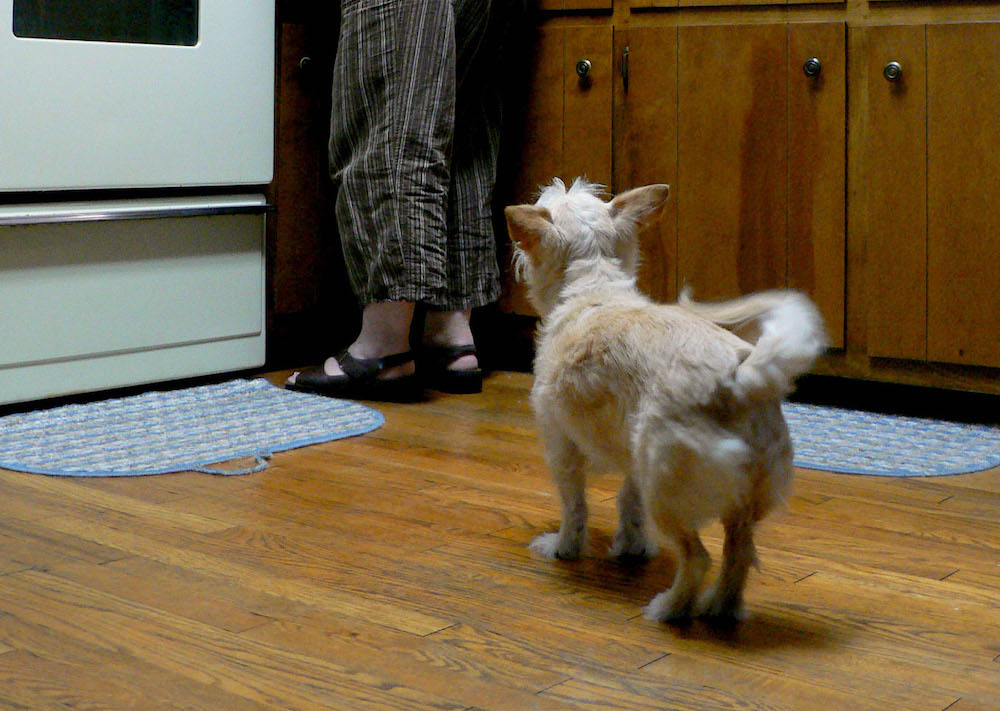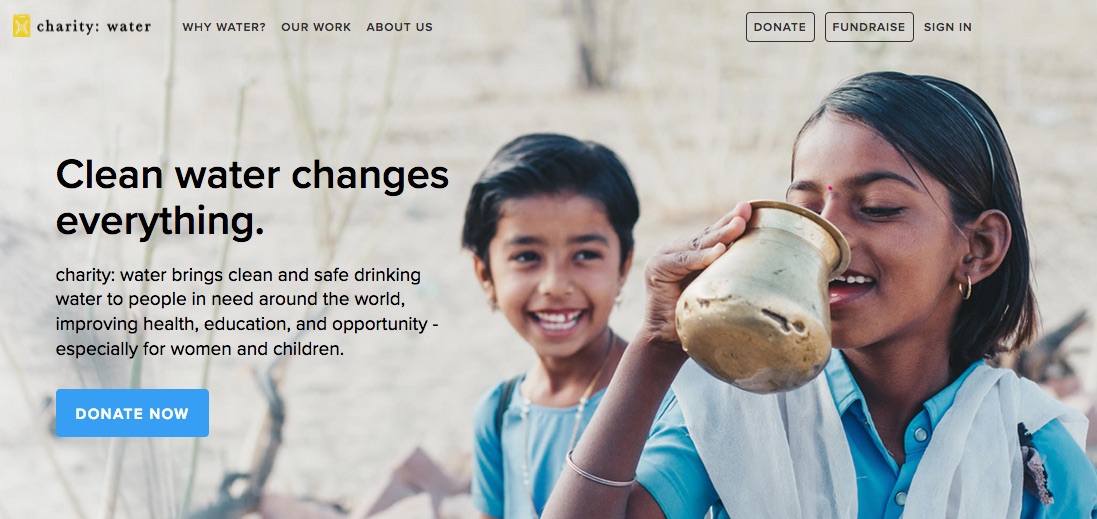Yesterday on Twitter, I kept seeing an increasingly desperate donation pitch from a film review website that’s in danger of shutting down.
This site and its fans were using a donation pitch that boiled down to: “we love the writing we do on this site, and we want it to be our full-time job… but we can’t do that unless you give us money.”
Hey, look: that’s great. And sure, we’d all like to make a living by doing what we enjoy.
There’s just one problem with this kind of donation pitch:
I don’t care.
And no, it’s not that I want their site to fail. (I’ve actually never read it, so I have no opinion either way.) Their real problem is that they aren’t giving me a reason to support them. “Please” isn’t a reason.
While this is just one example, I see this exact same flawed pitch from money-seekers of all sizes. Whether its a massive nonprofit who wants more donors or an individual YouTube channel owner who wants viewer support via Patreon, almost every donation pitch makes this same mistake:
When you ask for donations, it’s not about you; it’s about what that donation will accomplish.
Unfortunately, most askers make their donation pitch all about them.
“Here’s all the great work we do. Here’s a terrible problem that your donation can help us fight. And here’s how passionate we are about this issue.”
Hey, that’s all nifty…
but no.
Here’s what your potential donors need to see from you instead.

How to Make an Effective Donation Pitch
There are four motivational components to any good donation pitch:
- your impact
- your data
- your people
- your goals
Use Stories to Prove Your Impact
As any screenwriting guide will tell you, the key to a high-impact scene is show, don’t tell.
“We help people with Problem X” is a nice claim, but it’s also empty. Where’s the proof?
On the other hand, “here’s how we helped someone overcome Problem X, and here’s how different their life is now that they no longer have to worry about Problem X” is demonstrable proof that your efforts work.
When it comes to your own donation pitch, don’t just tell us what you want to do; show us what you’ve done.
Charity: Water does this incredibly well. Their website showcases the positive effects of clean water on the people who receive it thanks to their donors’ generosity. Once you see their recipients’ stories, you trust this organization to use your money to accomplish even more.
In other words:
“Look at what we want to do” is nowhere near as compelling as “look at what we’ve done.”
Or, as Scott Paley says:
Studies clearly show that people are much more likely to donate when presented with a personal story rather than big group statistics. People identify with other people, not with abstractions. Make your stories individual, specific, and personal. Stories about your beneficiaries set up emotional empathy. Stories about your supporters inspire action.
For more help with your donation pitch, check out Joan Garry’s extensive collection of fundraising tips.
Explain What Your Data Means in Human Terms
If you’re not measuring your impact, you can’t prove it.
But there’s still a limit to the usefulness of data, because numbers aren’t stories.
In order for your data to connect with a potential donor, you have to make your data personal.
How?
Present your statistics as people.
Here’s an example:
Several programs in the U.S. seek to reduce recidivism rates among former inmates. There’s plenty of data that can prove how well these methods work. And the best among them, like the Prison Entrepreneurship Program (PEP), showcase their results with numbers that include:
- Strong Employment: 100% of PEP graduates are employed within 90 days of release from prison
- Excellent Job Retention: Nearly 100% of PEP graduates are still employed after 12 months (compared to a nearly 50% national unemployment rate among ex-offenders)
- Exceptionally Low Recidivism: PEP graduates have an exceptionally low <7% three-year recidivism rate compared to the national average of nearly 50%
But as impressive as all this data looks on paper, it’s still an abstraction. Which is why PEP also includes firsthand stories about the people it helps, told from their own point of view.
Because, yes, a near-100% employment rate sounds great. But hearing how PEP helped one man repair his relationship with his family and earn the right to walk his son across the stage at his high school graduation feels personal.
Celebrate the People Who Make Your Impact Possible
Let’s think like a sports team for a second.
What’s the difference between the New York Yankees and the New York Mets?
They both play baseball, and they’re both located in NYC. So why does someone root for the Yankees instead of the Mets? Because of their players, their staff, and their fans. Their people are their differentiators — and so are yours.
If you’re a nonprofit, you don’t exist without the expertise of your directors, the generosity and guidance of your board, and the donated labor of your volunteers.
So when you make your donation pitch, show your donors just how valuable your people are to your mission. By highlighting what sets your team apart, you give your donors a reason to root for their success, and you make the act of supporting your mission feel like an identity-defining choice.
Likewise, if you’re an artist seeking support on Patreon, give your potential donors a peek behind the curtain.
How long does it take you to create an episode of your YouTube vlog, or an illustration? Give your donors a glimpse of the process.
How many people are involved in making your media? Who are all the “invisible” helpers that your audience never gets to see? Let your donors connect with them and their donation will feel even more like they’re part of your team, too.
Explain what equipment you use to create your media, and why. What sets it apart? Why does the quality of your microphone matter? What would a faster laptop help you achieve? This is where impact + data + people = story.
And it’s also where we encounter our fourth component of a good donation pitch:
Tie Every Donor Dollar to a Tangible Goal
When it comes to donations, transparency helps but opacity hurts.
According to one study, 33% of people who don’t donate to charities withhold their generosity because they don’t trust that their money will be efficiently used.
Why not?
Because sometimes it’s impossible to tell what your donation is really being used for. Did your $20 actually help the mission, or did it buy a new stapler and a few beers at the office happy hour?
Want to increase your donations? Be explicit with how donated money is used, and give clear examples of what your efforts cost.
For example, let’s say your summer school reading program increases a child’s reading ability by a full grade level, and it costs $60 per child to implement.
In this case, you could ask for $60 donations by pointing out that “for every $60 we receive, another child gains a reading level.” This would tie each donor’s gift directly to a measurable outcome for one person. Or you could ask for $20 donations to “give a student one month of reading help.” That way, even if someone can’t afford to donate a full program’s worth of aid to a student, they can still feel like they had a specific one-to-one impact.
Similarly, if you’re looking for Patreon or Kickstarter supporters, tie their donations to itemized goals like equipment costs, costs per hour, or other tangible contributions. By doing this, it won’t feel like someone is donating to a large, amorphous project [that could fail], but to a discrete individual part of an achievable vision. (For example: “Give us $100 to help us make our short film” sounds much more vague than “Donate $100 to feed our whole crew for a day.”)

Also, being adorable helps.
BONUS: The One Donation Pitch You Should Never, Ever Make
Remember that Twitter donation request I mentioned at the top?
The part of their campaign that drove me to write this post was its sour tone. It wasn’t just desperate; it was accusatory.
“No one has given us any money in several days and if you don’t either then we may have to shut down” is the worst possible donation pitch, for three reasons:
- It proves you have no other revenue, which implies that your mission is faulty
- It suggests that your donors will be begged for money on a regular basis
- It shows that you don’t have the organizational or management skills to keep this venture afloat without getting bailed out by someone else, and probably repeatedly
Transparency is great, but if being transparent reveals that the only thing stopping your organization or venture from collapsing is the benevolence of others, you may need to fix your fundamentals before you expect anyone to take your donation pitch seriously.
If You Like This Post
… then you may also like this post about why no one is buying from you (and how to fix it), or this post about how to tell better stories with data.
IMAGES: “Giving Hands” by Artotem and “Begging” by Valerie Reneé via Flickr.




2 Comments
Brian Rendel · December 1, 2017 at 9:41 am
Appreciated this, Justin!
Leslie Poston · November 9, 2017 at 2:23 pm
Love this. Will share from our Buoy Up feeds! Very relevant to our audience.